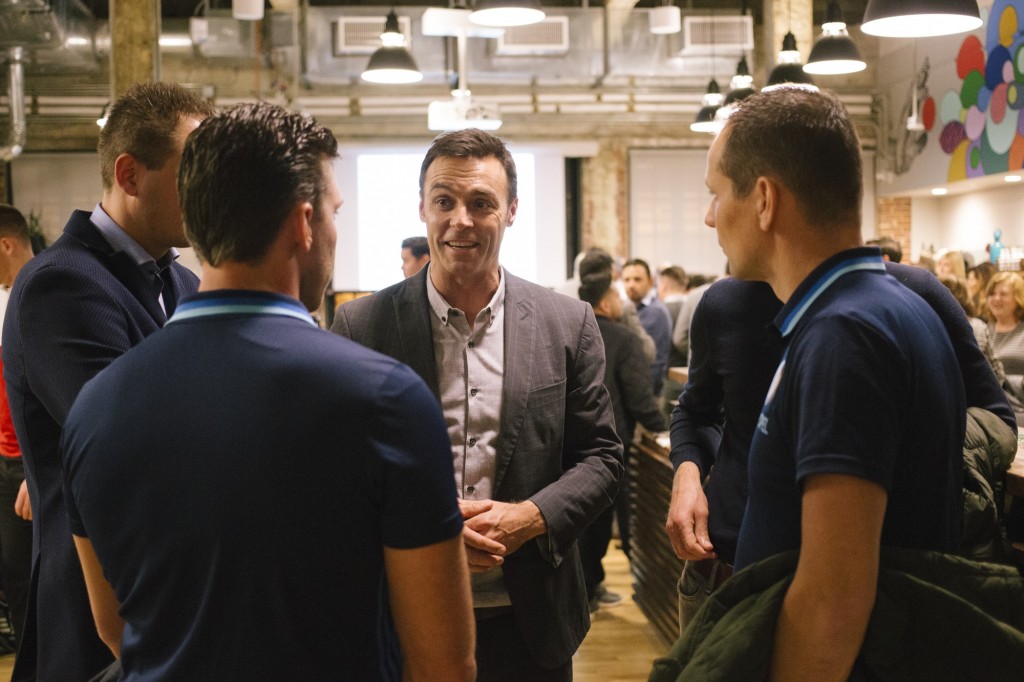On this episode, I’m joined by Sacha van der Most van Spijk.

Sacha’s life story has some interesting twists and turns, but with a little bit of random luck, he’s been able to forge a career for himself in soccer here in the United States.

When I say luck, I mean it, and Sacha will explain that during the interview, but I don’t want to downplay the amount of hard work Sacha has put in. He has absolutely paid his dues.
Some of the highlights from this episode include:
- Insights from an international youth scout
- Personality, and how most special players seem to have it
- Sacha’s decision to hire Brian Kleiban at Chivas USA
- And I ask him who he wants to see win a World Cup: Holland, United States, or Mexico
Sacha also runs a non-profit organization that focuses on community building and youth development in Downtown Los Angeles. He’s a busy guy and I was fortunate to get an hour of his time.
Links to things mentioned:
- Humans Unlocking Potential
- Home Field Advantage
- Article referenced at the beginning of the interview
Sacha is a good friend of 3four3, and I’m honestly surprised I haven’t brought him on the podcast sooner. But maybe the wait was worth it? Because this interview is loaded with plenty of gold nuggets for you whether you’re a coach, a player, a parent, or just a fan.
Don’t want to miss an episode of the 3four3 Podcast? Subscribe to 3four3 FM on iTunes or 3four3 FM on Stitcher.

Just a reminder, this episode, and all of our episodes are brought to by 343coaching.com.
Good stuff. Great segment on the differences between how the sport is organized here and abroad. Also, nice article from Sacha on thehup.net.
I’d like to know more about the finances of a typical American club and Quick. How are the costs so much lower? Are most of the games intra club? Is most of the coaching teenage volunteers? How much does the club depend on other sources of revenue and what are they?
Interesting point about how the youth players often go and watch the adult game on Sunday. That is a connection youth players in the U.S. don’t have. Even their high school team is something most won’t even see until they enter high school.
Hey Seth, excuse me for the delay of my reply, i honestly just noticed your response.
The main difference between a club in the US and a club like Quick, is that the Dutch clubs are community driven vs $ driven clubs in the USA.
Looking at the club structure, you notice that recreational and competitive teams fall under the same club organization, leaving open the opportunity to always continue to develop and move up the ladder. The other big structural difference is that both youth and adults play under the same organization, which again opens up the opportunity for continued development of youth players. If a youth player develops well and plays his / her games on Saturday, the first team coach can pick the player up to play on Sunday with the adults.
Looking at the finances, there are several reasons why the Dutch clubs keep the costs a lot lower. Most coaching within the club is done on volunteer base. A club like Quick starts identifying teenage youth members as potential coaches, and provides opportunities to get involved with coaching, including getting licensed by the Dutch Federation (KNVB). Usually a club will have a few paid coaches, like the youth development director, and the first team coach, but most youth coaches get involved because they love it, and like to help out their club.
They do the same thing with referees. In the younger age groups and more recreational teams, the federation does not schedule the referees, but the club does. A similar model as with the coaches is being used, by identifying youth club members to get involved with reffing games. Once again, referee education is being provided.
Pretty much every neighborhood has a club, and fields are being provided by the city, while the clubs have to make sure that their fields are maintained, as well as their club-houses and locker rooms. Like this the clubs play a big role in the neighborhood’s social life.
Besides coaching, referee, and field fees, traveling is another factor that makes USA club sports so expensive. Obviously the Netherlands is a much smaller country than the USA, but the focus on local and regional development, and having one non $ driven scheduling organization (KNVB), helps keeping the cost low. Teams play within their own cities and regions, against other clubs. Competitions where youth players jump in an airplane, sleep in a hotel, or need to eat at restaurants do not exist up to the professional level.
Just think about where US soccer could be if we start spending our $ on developing youth soccer coaches, referees, and better facilities available for everyone, instead of continuing to focus on travel clubs and leagues….
To me that is an easy choice.